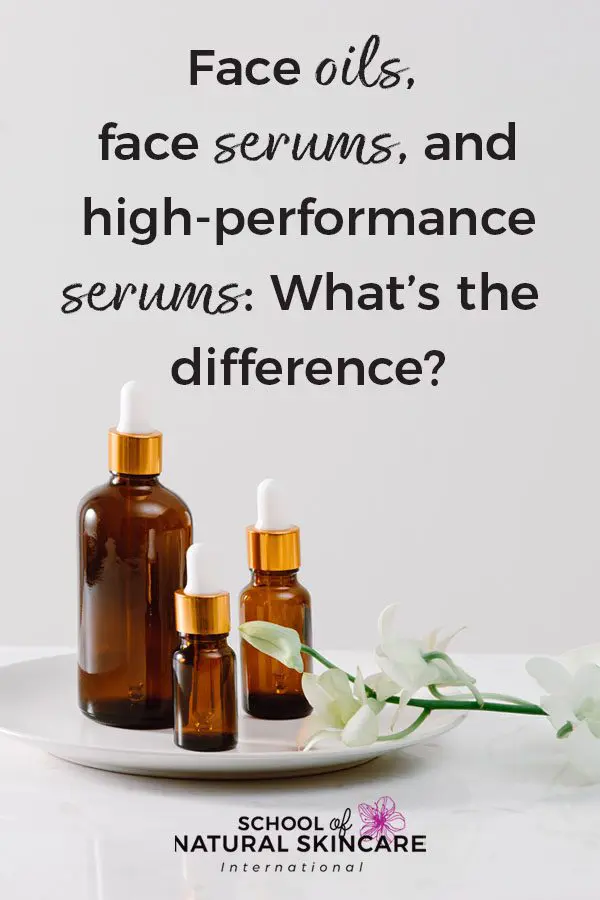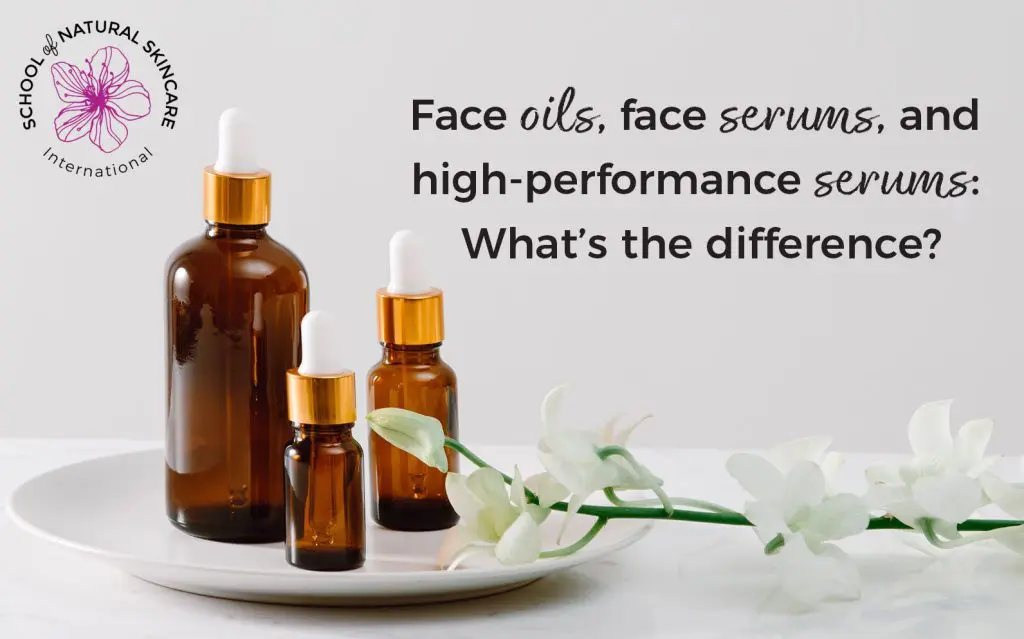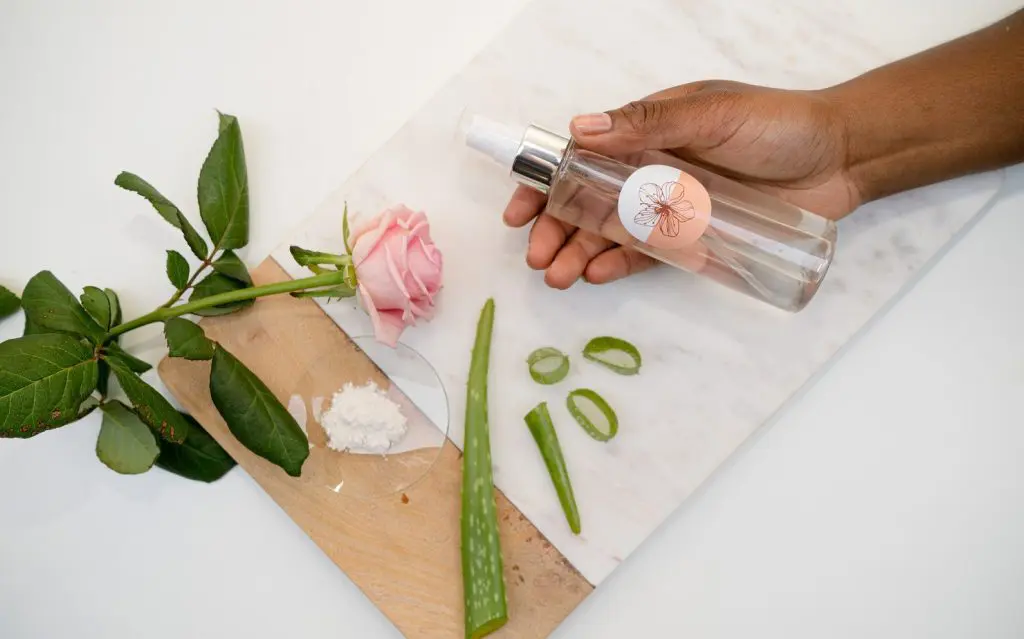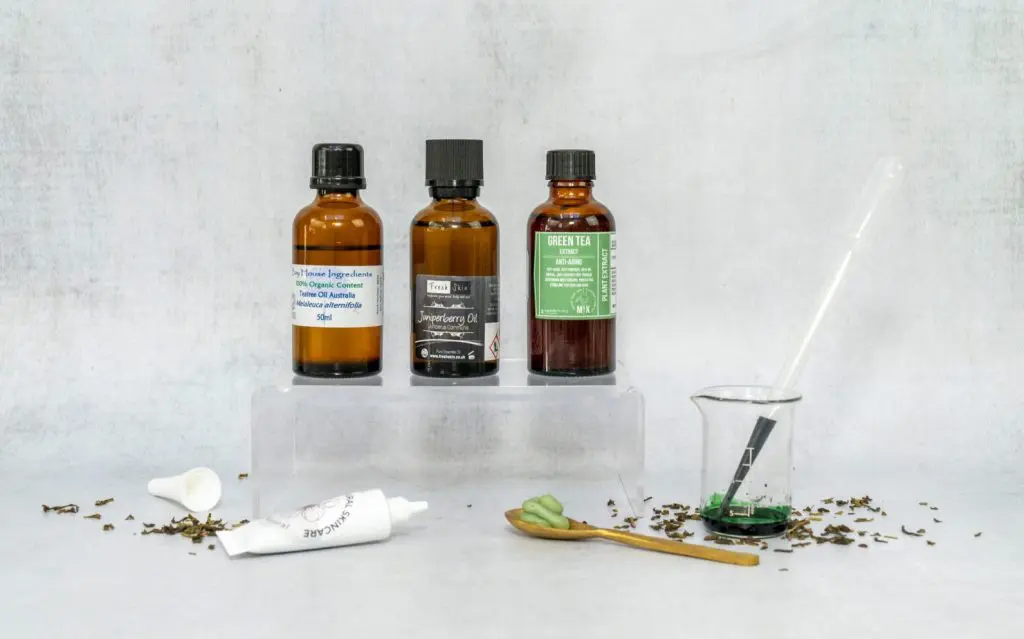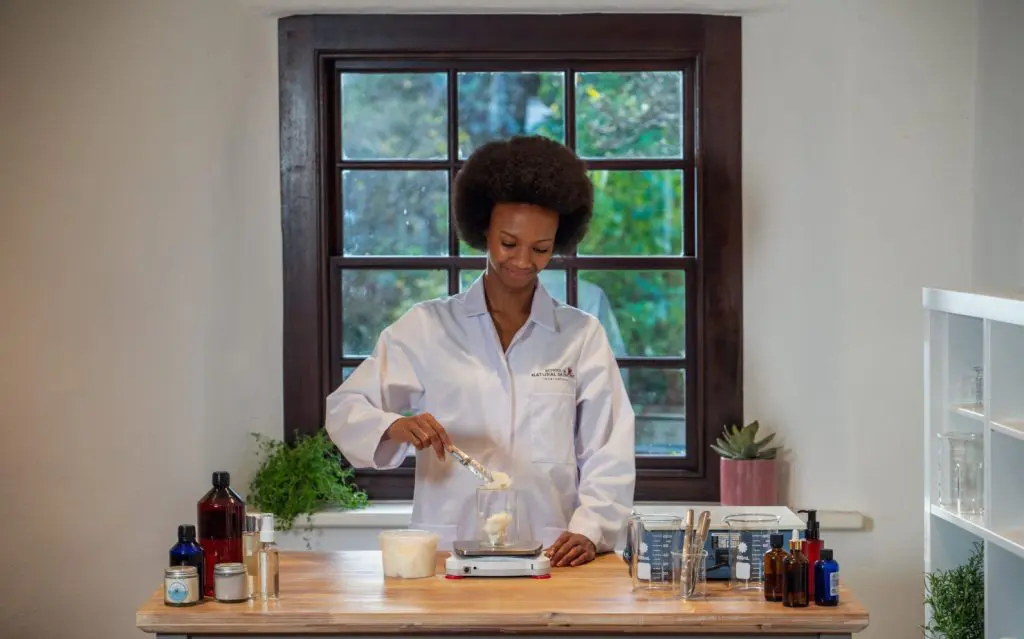Face oils and serums are two of the hottest trends in facial care products right now, and for good reason. Both types of products can be amazing for the skin, and create dramatic changes due to their nourishing and emollient ingredients. If you’ve done any experimenting at all in creating or blending your own face oils, you have probably seen what wonderful effects they can have on the skin. With the right ingredients, skin looks dewy, refreshed, and rejuvenated! And there are so many great oils that can be combined to great effect.
Because face oils and face serums are two different product types which are sometimes confused, you may also be wondering, what’s the difference between them? That’s one of the topics we wanted to cover in this article, along with showing you that there’s so much more you can create beyond face oils. And if face oils are already amazing, just imagine what kinds of products you can make with a bit more knowledge! So, let’s get started.

Face Oils vs Face Serums: Some Basic Definitions
First off, a face oil is usually defined as a blend of skin-safe oils intended primarily to moisturize, smooth and soften the skin. Like we said before, the definitions for these products can vary from brand to brand, and formulator to formulator, and there is no set standard, but generally speaking, face oils usually contain right what it says on the tin: Oils.
A face oil is usually an effective but quite basic formula, typically formulated for a skin type, but not meant to target a specific skin condition. However, face serums are targeted for conditions as well as skin types. This is one of the primary differences between the two product types.
Face oils will always appear as oils, of course, but face serums can take several different forms. They can be oil-based, gel-based, or emulsion-based (and other types, too, which we’ll talk more about in an upcoming article!)
So, what’s in the formula for an oil-based facial serum, and how does it differ from a facial oil?
Similarities
Face oils and oil-based serums are both primarily made of oils! In natural and organic products this means carrier oils.
Carrier oils are made of fatty acids and other beneficial ingredients such as phytosterols, vitamins, carotenoids, and squalane. Fatty acids penetrate the upper layers of the epidermis and help the skin to function properly. They improve the skin’s condition and appearance.
Other ingredients, often referred to as unsaponifiables, can have different beneficial effects on the skin: They can protect from moisture loss, soften skin, or even have a rejuvenating effect.
When oils are applied on the skin they fill up small spaces between epidermal cells, which is seen and felt as smoother, healthier and softer skin. Because of this, both face oils and face serums leave the skin smoother and softer.
Differences
The main differences between face oils and anhydrous (oil-based) face serums are the additional ingredients included in the formula which go beyond just oils. These other ingredients mean that the serum offers additional benefits.
While face oils are primarily used for moisturizing, and do a beautiful job of it, anhydrous facial serums are usually formulated to target specific skin concerns. You can find serums which are focused on:
- Anti-aging
- Antioxidant and Anti-pollution
- Soothing and Calming
- Protective
- Moisture boost
- Firming and Toning
- Nourishing and Brightening
- Repairing and Rejuvenating
- Oil balancing
Serums usually deliver these benefits by targeting specific issues with botanical extracts, vitamins, and lipophilic actives to precisely meet that need. This allows them to be much more effective for issues such as age spots, hyperpigmentation, inflammation, loss of skin tone, and free radical damage. They might also use natural alternatives to silicone such as esters and squalane to create a lighter, silkier, more elegant skin feel.
Types of Oil-Based Serums
When we cover anhydrous facial serums in our course, we divide them into two basic types: oil-based facial serums and oil-based high-performance facial serums. High-performance serums contain more potent and a wider variety of active ingredients.
Here is how we differentiate between the three types of products in our courses:
| Facial Oil | Oil based Facial Serum | Oil based High-performance Facial serum | |
| Function/ benefits | A every day facial product to moisturize, smooth and soften skin. | A concentrated, facial treatment to moisturize, smooth and soften skin and deliver specific functions/benefits. | A concentrated, high performance facial treatment that uses potent active ingredients to target specific skin concerns and offer visible benefits. |
| Carrier oils/lipids/esters | Uses a blend of less expensive carrier oils eg apricot kernel oil, jojoba oil, hazelnut, sunflower. | Uses a blend of both less expensive and specialist, carrier oils eg squalane, jojoba, rice bran, rosehip, borage, argan, pomegranate seed, sea buckthorn. | Uses specialist carrier oils, squalane and esters. |
| Active ingredients/Botanical extracts/ Vitamins | Contains an antioxidant (usually Vitamin E or Rosemary Extract) to extend shelf life of product. | Contains oil soluble botanical extracts, antioxidants (usually Vitamin E or Rosemary Extract) and perhaps other actives. | Contains oil soluble vitamins, lipophilic actives, potent antioxidants, and oil soluble botanical extracts eg alpha lipoic acid, coenzyme Q10, carotenoids, Vitamin E , Vitamin A, lipophilic derivatives of Vitamin C, ceramides. |
| Fragrances | Less expensive essential oils. | Combination of less expensive and premium essential oils. | Premium essential oils, CO2 extracts, absolutes. |
| The course we teach this on | Diploma in Natural Skincare Formulation | Diploma in Natural Skincare Formulation | Advanced Certificate in High Performance Serum Formulation |
Facial oil vs facial serum: Example formulas
If you’d like to see some examples of a facial oil and facial serum formula you can take a look at our article Make your own $140 serum for under $5 where we go behind the label of a popular facial oil and a popular facial serum and create our own version of the formula.
If it’s high-performance facial serum you are interested in then you’ll want to sign up to our Advanced Certificate in High-Performance Serum Formulation!
Quick guide to formulating with Vitamin C
Ready to start supercharging your skincare formulations with high-performance ingredients?
Sign up to our weekly newsletter and receive your free guide and Vitamin C antioxidant serum formula today. – an exclusive gift from us!

In our quick guide to formulating with Vitamin C you’ll learn:
- What is Vitamin C?
- What are the benefits of Vitamin C?
- What type of cosmetic is it suitable for
- Stable forms of Vitamin C and how to use them.
Plus we’ll share with you a Vitamin C antioxidant serum formula you can make yourself!
You’ll also discover the amazing benefits Vitamin C offers for the skin.
Love learning about serums? Save this image below on Pinterest so you can be sure to remember
